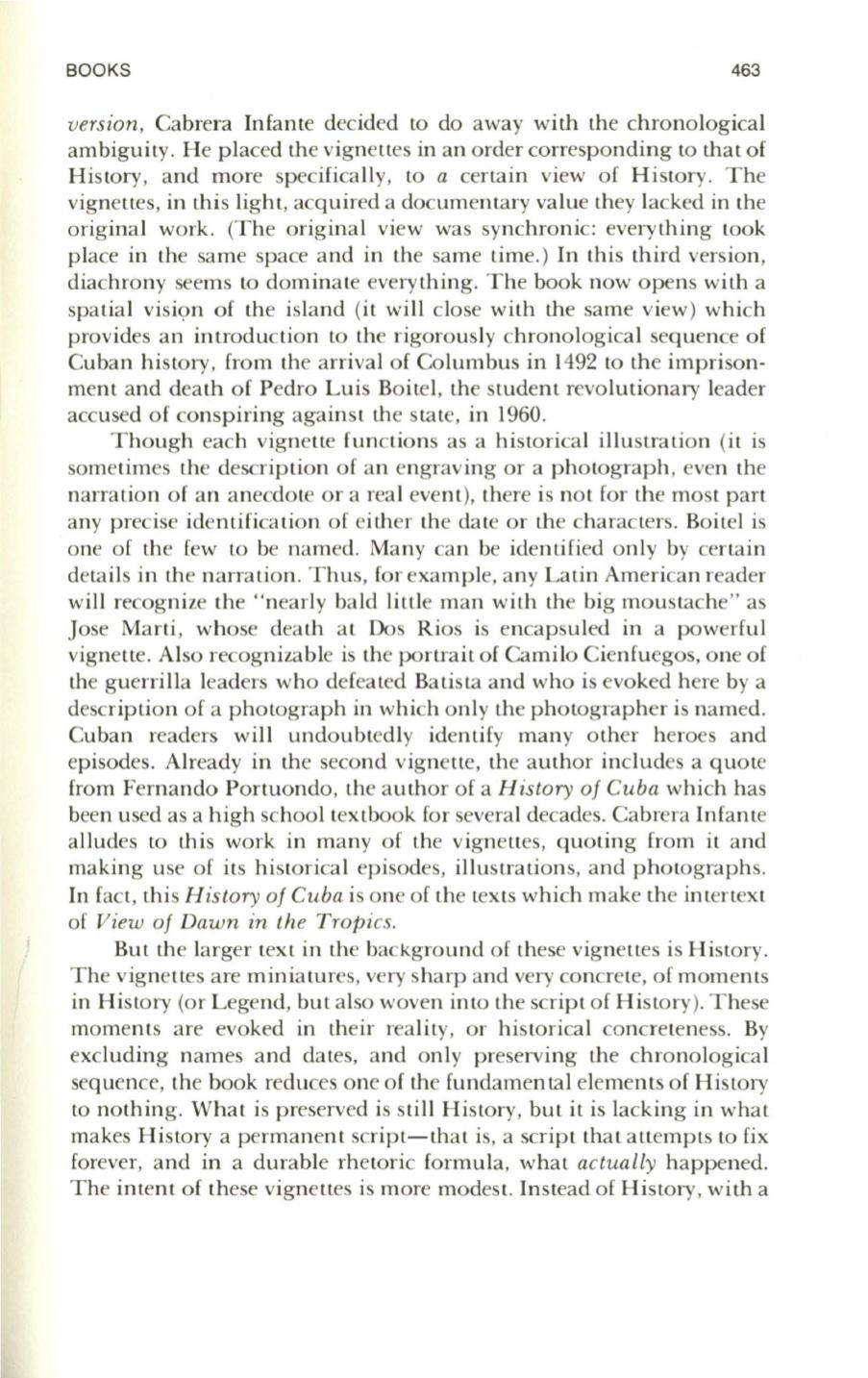
BOOKS
463
verSIOn,
Cabrera Infante decided to do away with the chronological
ambiguity. He placed the vignettes in an order corresponding to that of
History, and more specifically, to
a
cerlain view of History. The
vignettes, in this light, acquired a documentary value they lacked in the
original work. (The original view was synchronic: everything took
place in the same space and in the same time.)
In
this third version,
diachrony seems to dominate everything. The book now opens with a
spatial visi<;m of the island (it will close with the same view) which
provides an introduction to the rigorously chronological sequence of
Cuban history, from the arrival of Columbus in 1492 to the imprison–
ment and death of Pedro Luis Boitel, the student revolutionary leader
accused of conspiring against the state, in 1960.
Though each vignette functions as a historical illustration (it is
sometimes the description of an engraving or a photograph, even the
narration of an anecdote or a real event), there is not for the most part
any precise identification of either the date or the characters. Boitel is
one of the few to be named. Many can be identified only by certain
details in the narration. Thus, for example, any Latin American reader
will recognize the "nearly bald little man with the big moustache" as
Jose Marti, whose death at Dos Rios is encapsuled in a powerful
vignette. Also recognizable is the portrait of Camilo Cienfuegos, one of
the guerrilla leaders who defeated Batista and who is evoked here by a
description of a photograph in which only the photographer is named.
Cuban readers will undoubtedly identify many other heroes and
episodes. Already in the second vignette, the author includes a quote
from Fernando Portuondo, the author of a
History of Cuba
which has
been used as a high school textbook for several decades. Cabrera Infante
alludes to this work in many of the vignettes, quoting from it and
making use of its historical episodes, illustrations, and photographs.
In
fact, this
History of Cuba
is one of the texts which make the intertext
of
View of Dawn in the Tropics.
But the larger text in the baCkground of these vignettes is History.
The vignettes are miniatures, very sharp and very concrete, of moments
in History (or Legend, but also woven into the script of History). These
moments are evoked in their reality, or historical concreteness. By
excluding names and dates, and only preserving the chronological
sequence, the book reduces one of the fundamental elements of History
to nothing. What is preserved is still History, but it is lacking in what
makes History a permanent script-that is, a script that attempts to fix
forever, and in a durable rhetoric formula, what
actually
happened.
The intent of these vignettes is more modest. Instead of History, with a


